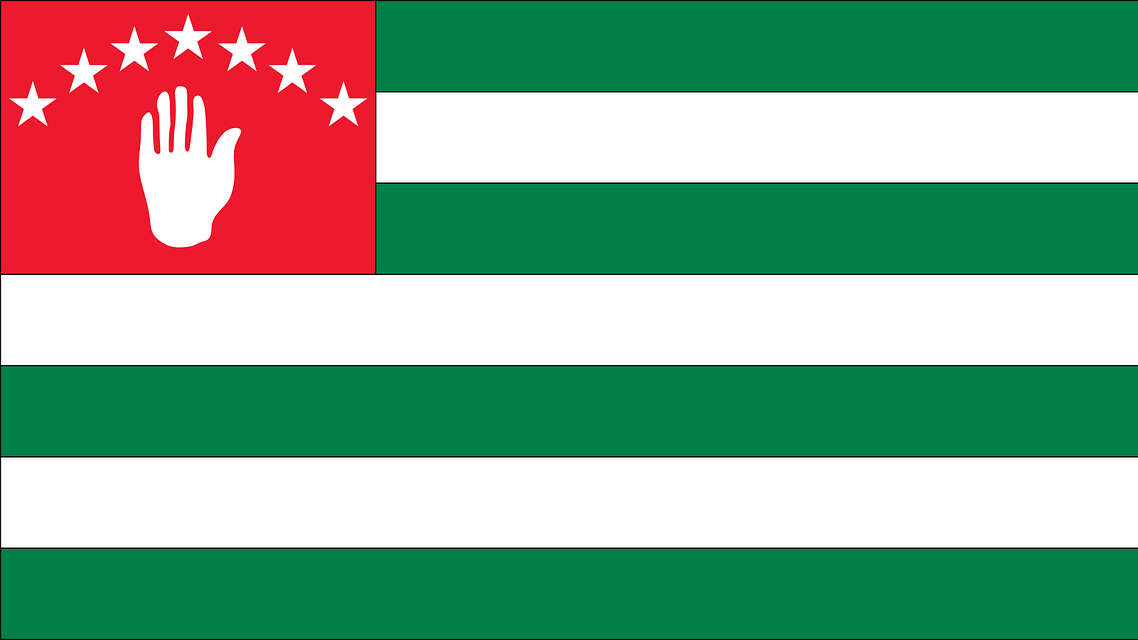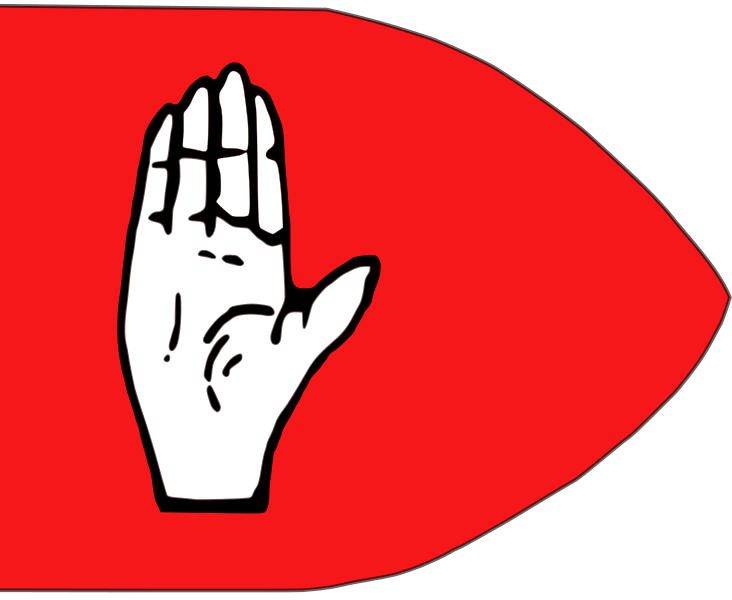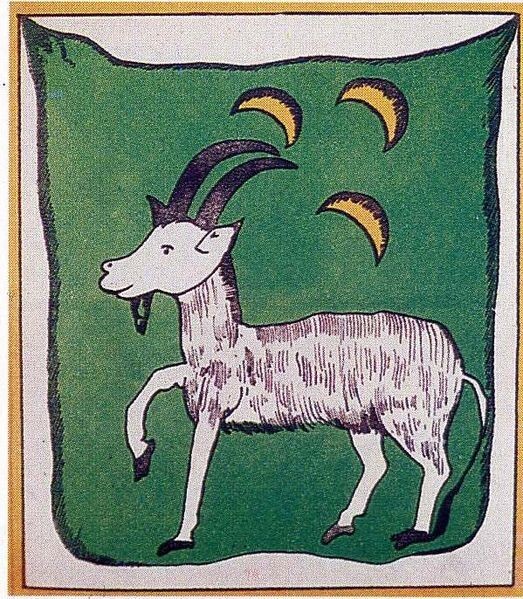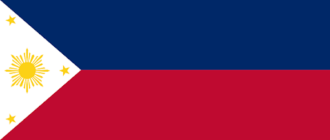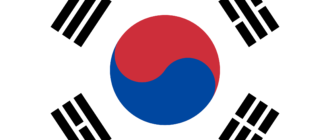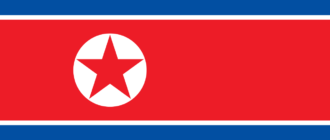The flag of Abkhazia throughout the entire period of the Republic changed repeatedly and depended on the influence of which state in that period of history there was a given state (partially recognized in the world). For example, in 1925, Abkhazia was influenced by the USSR, due to which the first constitution of the Abkhazia people was proclaimed. And there was also a text description of the then flag used as the official state symbolism.
Flag of Abkhazia: Photo
The Abkhazia flag consists of 3 white and 4 green stripes of the same size. In the upper left corner – a red rectangle, which makes up exactly 0.38 from the length of the flag. On his background, a white hand and 7 of the same stars are depicted (located one of the edges up).
What flags from Abkhazia
It is believed that the basis for the future flag of Abkhazia was the banner that was used in the Republic of Highlanders of the Caucasus in 1918. And the colors are used by those used in the symbols of the Abkhazia kingdom earlier. But who is exactly the author – is unknown, since its initial versions are known since the 8th century of our era. It is about the banner of the Abkhazia kingdom, which shows a red shield with a white hand. It symbolized hospitality, but at the same time readiness to protect native land.
In the 15 – 19th centuries, when the Abkhazia Principality existed, the flag was conditionally absent. Instead, a symbol depicting a mountain goat on a green background was used. And in the 18th century, it was replaced by the flag on which alternating vertical red and green equal bands were depicted.
A modern variation of the flag was approved in 1992 by sketches of the Soviet artist Valery Gamay. He also used the banner of the Republic of Highland Caucasus as the basis for his work. That is, the true author of Porad is not worth it.
When Abkhazia was part of the Soviet Union, the photo of the flag was recreated on a red background (like all the then republics belonging to the USSR). In the upper left corner – the geographical image of the Power, Sickle, and Hammer. This is complemented by one horizontal blue stripe. This option was used from 1958 to 1979, then the name of the Republic name was added to it. The ratio of length and width was 2 to 1.
What denotes the flag of Abkhazia
What is the meaning of the colors of this flag? Generally accepted description:
- White color is spirituality, the moral rescue of the people.
- Green denotes youth, time.
- Red – Symbol of Life.
And here are seven stars located above the image of the palm opened – this is the sign of the statehood of Abkhazia.
By the way, according to another version, the alternation of white and green bands is explained by the fact that in this kingdom there has always been an equalization of religion. That is, Christianity coexisted with Islam without any claims of multiple representatives to each other. Now it is customary to assert that this is a sign of goodwill of the Abkhazia people, who “does not meet their guests with a weapon”.
Also, some historians believe that:
- White color symbolizes the world.
- Green – Suitability to Islam.
- Red – Symbol of spiritual equilibrium.
Day of the flag of Abkhazia
The state day of the flag of Abkhazia is celebrated since 2005 after the signing of the relevant resolution (“On holidays”) then President Sergey Bagapsh. Then it was approved that the National Holiday was introduced on July 23. This is a day – a national weekend, a ceremonial raising of the flag is carried out, marking the sovereignty of the Abkhazia people.
By the way, initially planned a holiday day to appoint on September 30. It was then, in 1993, Prapor Abkhazia was raised on the border with Georgia as a symbol of independence. But in the future, this idea was decided to abandon the existing disagreements in the Council.
In total, we can assume that in the modern form, the flag of Abkhazia has been approved after the collapse of the USSR and the independence of independence (the final decision on the part of the Russian Federation was published only in 2005). Now Pramp is approved as a national symbol. By the way, his first variation used when speaking of the Council is still kept in the museum of combat fame.
